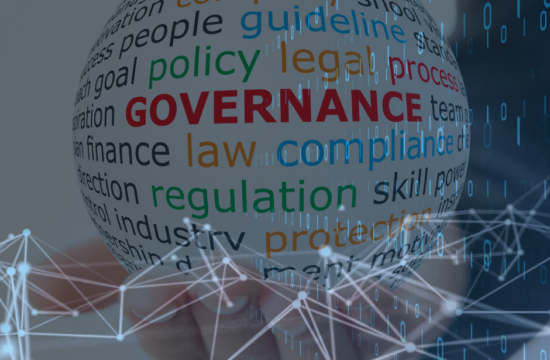According to the Aureus Analytics report, it is estimated that the world’s data volume will grow at 40% per year from 2021 to 2026. Data has been recognized as a strategic asset by enterprises.
Data is power.
Public data breaches have resulted in data security becoming a priority for enterprises. Data-privacy risks include inappropriate safeguards in technical measures, negligence due to improper configuration, lack of encryption, third-party access, outdated security software, social engineering, social media attacks, and mobile malware. Such risks hinder data flow and have led to the need for regulatory data governance.
What is Data Governance?
The Data Governance Institute (DGI) defines data governance as “a system of decision rights and accountabilities for information-related processes, executed according to agreed-upon models which describe who can take what actions with what information, and when, under what circumstances, using what methods.”

Data governance comprises all the processes, policies, standards, and roles that ensure information is used efficiently to achieve the goals of an organization. It signifies the procedures and responsibilities required to establish the quality and security of data used by an organization.
What are the Importance and Benefits of Data Governance?
It is essential to build trust among customers for successful and continued business. Breaching public data can drag enterprises into losses. Data governance prevents poor data management and non-compliance, which could have led to said business losses.
A robust data governance program enables organizations to discover and preserve useful information and discard outdated, trivial information. It ensures increased data centralization leading to better decision making and business planning.
More importantly, legislation revolving around data privacy is new and will continue to evolve as technology evolves. Thus, it is necessary to implement a proper data governance program to improve quality and ease of compliance and protect enterprises from being penalized for data breaches.
Who is Responsible for Data Governance?
Data Governance teams in organizations typically comprise the following roles:
1. Data Owners
Individuals or teams are appointed to decide who can have the right to access, edit, and determine how data can be used. They oversee and protect data domains.
2. Data Stewards
Data stewards collect, collate, and evaluate problems and issues relating to data. They ensure adherence to data policies and data standards.
3. Data Custodians
Custodians handle technical aspects of data maintenance. They manage the safe custody, transport, and storage of data.
4. Data Governance Committee
They are vested with the power to approve data governance policies and standards. They handle escalated issues.
5. Data Users
Data users are responsible for following the policies and guidelines established and outlined by the management. In case of any issues, they are obliged to report the same to the appropriate data owners.
6. Others
Other persons forming part of the Data Governance team include data architects, data modelers, data quality analysts, and engineers.
Data life cycles based on set standards are operated by data editors, who create and maintain data.
Executive sponsors provide sponsorships, strategic direction, and funding.
Master Data control and governance across enterprises is designed, implemented, and maintained by Managers.
Architects oversee designs and implementation.
Data Analysts analyze and determine trends.
Data strategists develop and execute plans made from trend patterns.
Compliance specialists are involved in ensuring adherence to standards required by legislation.
How Can a Data Governance Team Help with Data Privacy Regulations and Compliance?
Choosing the right data governance plan and team is objective to each enterprise depending on the business’s sector, size, and culture. Data governance teams establish and implement the framework to meet key governance standards. This framework encompasses ownership of data assets, access rights, analytics, and security systems.
The governance teams ensure that the data collected, stored, and used is managed in compliance with the law and the customers’ best interest. They largely help corporational processes, like managing risks, business processes, mergers, acquisition, marketing, and financial planning.
With the advent of new technology and the continued expansion of data, data governance will have a wider application. Forming a well-equipped and experienced Data Governance team is an enterprise’s first step toward an effective and evolving data governance regime.
Data Governance Tips for Privacy Teams
Data governance teams have the key role and responsibility to formulate the basic framework of the enterprise’s privacy governance program. This requires the team to be strategically placed in a manner that can effectively ensure collaboration of every part or department of the enterprise. Here are some tips and best practices in data governance that Data Intelligent organizations adhere to:
- The first step to framing a governance program is to analyze the different roles, responsibilities, business terms, and data domains present in the enterprise to determine if the program should be centralized or decentralized.
- Understand how business analysts use data, the processes surrounding it, and the flow of information within and outside the enterprise to identify the compliances the enterprise is liable to follow and develop a governance plan.
- Define control measurements such as automating workflow processes, applying them to governance structures and data domains, and reporting the progress.
- Centralize data using data governance technology. Some useful features to prioritize would include a business glossary, the quality of the data, and demarcating the responsibilities of persons involved in the data process. It is important to use technology with a user-friendly and reliable user interface that will simplify and improve the efficiency of the entire process.
- Maintaining consistent communication and setting up a metric to measure data governance goals will improve the teams’ efficiency in the data governance compliance plans.
Conclusion
Nowadays, almost all businesses collect and manage personal information about their customers. Data privacy risks increase operational inefficiencies, attract intervention by regulators, and result in financial penalties and irrecoverable loss of consumer trust. Cyber security and privacy concerns mandate the need for data to be protected. Various privacy and data governance laws such as HIPAA, FCRA, FERPA, GLBA, ECPA, COPPA, and VPPA have been enacted in the United States to address such data privacy risks.
Data Governance ensures that data collected is confidential, secure, and compliant. Every enterprise needs to increase governance investments to reduce the risk of breach. It is mandatory to build a strong foundation for data governance to implement and proactively address changes in regulation as they emerge and evolve.





